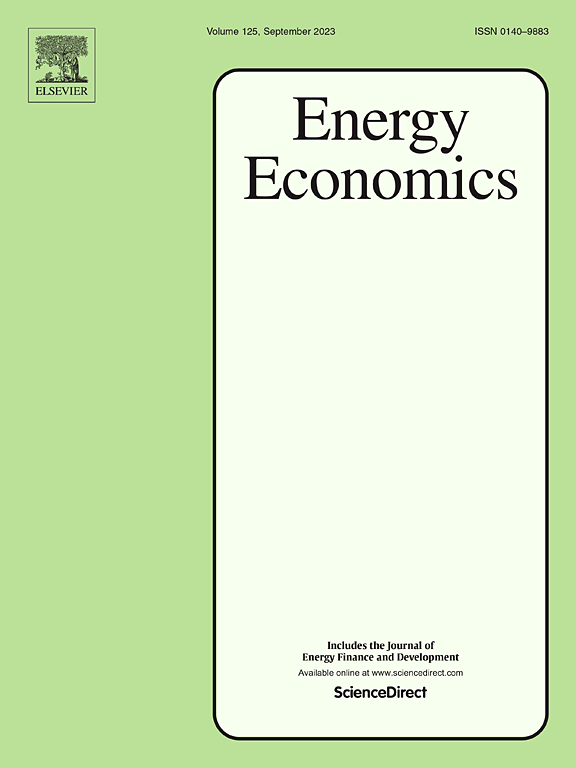跨危机的时变波动溢出效应建模:来自主要大宗商品期货和美国股市的证据
IF 14.2
2区 经济学
Q1 ECONOMICS
引用次数: 0
摘要
有效的风险管理需要辨别资产间波动的互动模式。我们的研究考察了 1990 年至 2022 年贵金属、能源、工业和农业等九种主要商品期货与美国 S&P 500 指数之间的相互关联程度。溢出指数是通过将时变参数(TVP)-矢量自回归(VAR)-随机波动率(SV)模型与 DY溢出指数相结合而构建的。我们分析了各种危机中波动传递的程度和方向性的波动动态。我们的结果表明,SPX 是波动信息的最大净传递者,主要影响原油、取暖油和黄金期货,在危机期间溢出效应加剧。黄金期货在危机期间的波动性传递更强,这与投资者表现出的 "向优质产品出逃 "的特征有关。COVID-19 危机和随之而来的供应链中断独特地增强了从木材到天然气期货的波动性传递,这在以往的经济危机中是从未见过的。我们认为天然气期货可以成为分散风险的可行资产,因为天然气期货与 SPX 的互动有限,与原油和取暖油期货的行业内传递也微乎其微。我们通过构建动态投资组合权重来证明我们对潜在对冲资产的研究结果,该权重基于投资组合中资产之间成对波动性相互作用的最小化。本文章由计算机程序翻译,如有差异,请以英文原文为准。
Modelling time-varying volatility spillovers across crises: Evidence from major commodity futures and the US stock market
Effective risk management requires discernment of volatility interaction patterns across assets. Our study examines the level of interconnectedness amongst nine major commodity futures across precious metals, energy, industrial and agricultural sectors and the US S&P 500 index from 1990 to 2022. Spillover indices are constructed by combining the Time-Varying Parameter (TVP)-Vector Autoregression (VAR)-Stochastic Volatility (SV) model with the DY- spillover index. We analyse the fluctuating dynamics of the extent and directionality of the volatility transmissions across various crises. Our results indicate that SPX is the largest net transmitter of volatility information, predominantly affecting crude oil, heating oil, and gold futures, with spillovers intensifying during crises. Gold futures receive heightened volatility transmissions during crises, alluding to the “flight to quality” characteristic displayed by investors. The COVID-19 crisis and the consequent supply chain disruptions uniquely heightened volatility transmissions from lumber to natural gas futures, unseen in previous economic crises. We posit that natural gas futures could be a viable asset for risk diversification as they show limited interaction with SPX and minimal within-sector transmissions with crude and heating oil futures. We substantiate our findings on potential hedge assets by constructing dynamic portfolio weights based on minimising pairwise volatility interactions between assets in the portfolio.
求助全文
通过发布文献求助,成功后即可免费获取论文全文。
去求助
来源期刊

Energy Economics
ECONOMICS-
CiteScore
18.60
自引率
12.50%
发文量
524
期刊介绍:
Energy Economics is a field journal that focuses on energy economics and energy finance. It covers various themes including the exploitation, conversion, and use of energy, markets for energy commodities and derivatives, regulation and taxation, forecasting, environment and climate, international trade, development, and monetary policy. The journal welcomes contributions that utilize diverse methods such as experiments, surveys, econometrics, decomposition, simulation models, equilibrium models, optimization models, and analytical models. It publishes a combination of papers employing different methods to explore a wide range of topics. The journal's replication policy encourages the submission of replication studies, wherein researchers reproduce and extend the key results of original studies while explaining any differences. Energy Economics is indexed and abstracted in several databases including Environmental Abstracts, Fuel and Energy Abstracts, Social Sciences Citation Index, GEOBASE, Social & Behavioral Sciences, Journal of Economic Literature, INSPEC, and more.
 求助内容:
求助内容: 应助结果提醒方式:
应助结果提醒方式:


